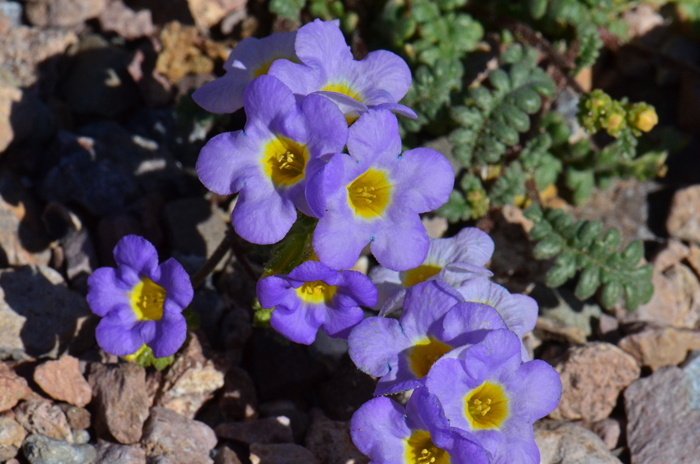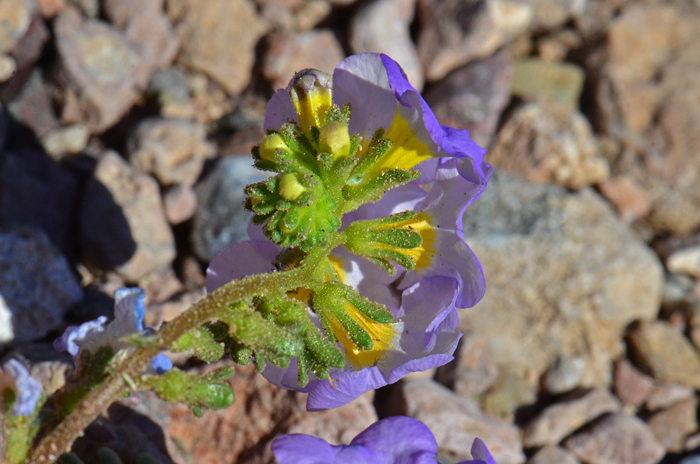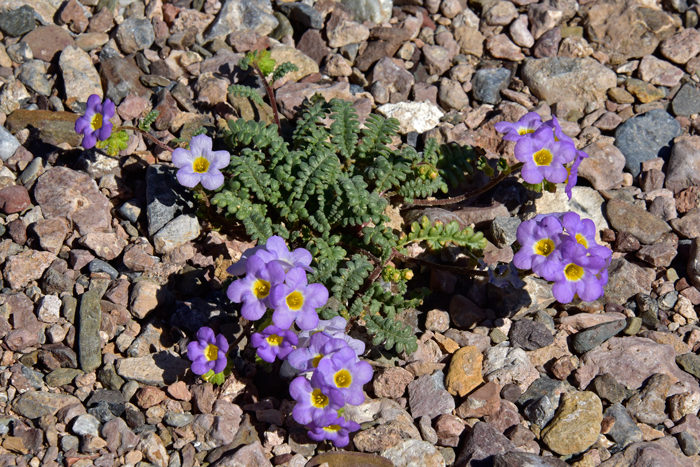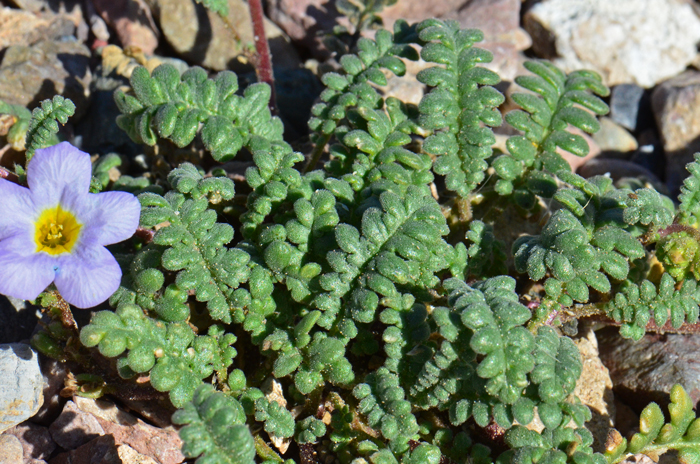Phacelia fremontii, Fremont's Phacelia




Scientific Name: Phacelia fremontii
Common Name: Fremont's Phacelia
Also Called:
Family: Hydrophyllaceae (Boraginaceae, Hydrophylloideae), the Waterleaf Family
Synonyms: ()
Status: Native
Duration: Annual
Size: Up to 12 inches or less.
Growth Form: Forb/herb; ascending with few to several stems; stems puberulous; aromatic.
Leaves: Green; oblong to oblanceolate; deeply lobed to compound; segments mostly rounded; puberulous.
Flower Color: Blue, pink, lavender or pale white with yellow throat; corolla campanulate or broadly funnelform; inflorescence exceeding leaves; fruit is a capsule, pubescence near base.
Flowering Season: March to June.
Elevation: 2,000 to 5,000 feet.
Habitat Preferences: Plains, mesas, arid flats, shrub land and grasslands; gravelly soils along washes.
Recorded Range: Fremont's Phacelia is found in the southwestern United States; AZ, CA, NV, UT. It is also found in Baja California.
North America & US County Distribution Map for Phacelia fremontii.
U.S. Weed Information: No information available.
Invasive/Noxious Weed Information: No information available.
Wetland Indicator: No information available.
Threatened/Endangered Information: No information available.
In the Southwestern United States: Arizona has 49 species of genus, California has 96 species, Nevada has 54 species, New Mexico has 23 species, Texas has 13 species, Utah has 42 species. All data is approximate and subject to taxonomic changes.
The genus Phacelia collectively are commonly referred to as; Phacelia, Scorpionweed and Heliotrope.
Comments: Fremont's Phacelia is one the showiest Phacelia with its variable multicolor corolla.
Special Value to Native Bees; Species of the genus Phacelia are known to, or thought to attract large numbers of native bees including Yellow Faced Bees, Miner Bees and Mason Bees. This information was provided by the Pollinator Program at The Xerces Society for Invertebrate Conservation.
In Southwest Desert Flora also see; Desert Bluebells, Phacelia campanularia, Cleftleaf Wildheliotrope, Phacelia crenulata, Distant Phacelia, Phacelia distans, Varileaf-Phacelia, Phacelia heterophylla, Kaweah River Scorpion-weed, Phacelia magellanica and Lacy Phacelia, Phacelia tanacetifolia.

